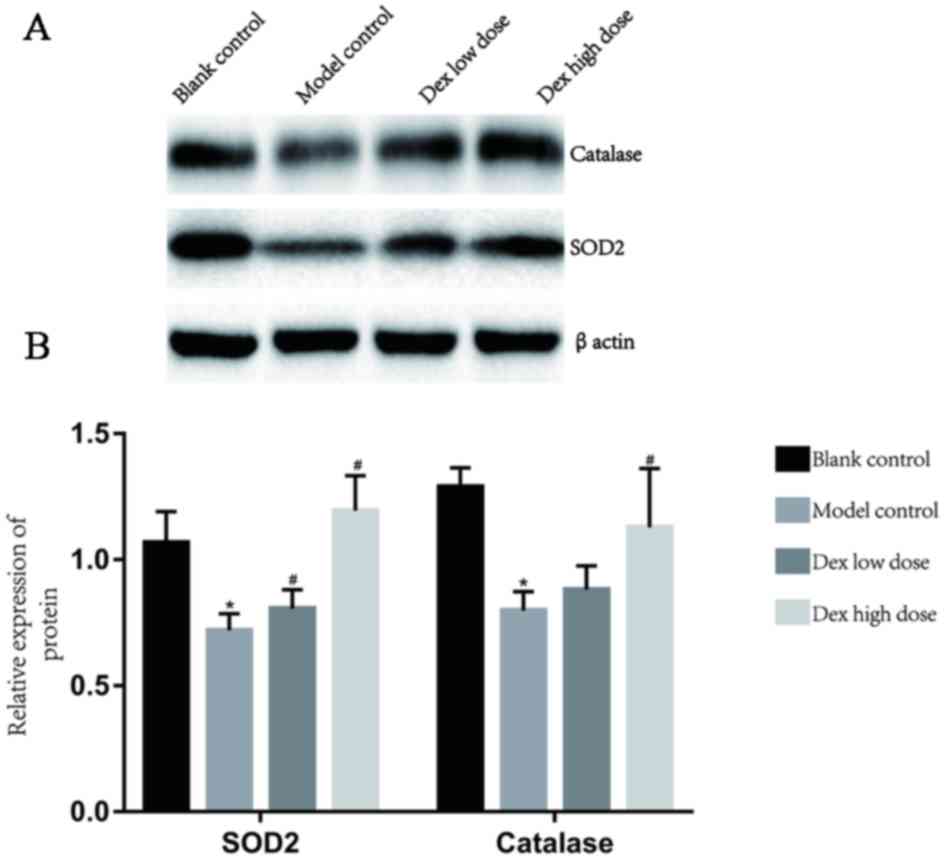Effects of dexmedetomidine on oxidative stress and inflammatory response in lungs during mechanical ventilation in COPD rats
- Authors:
- Published online on: December 17, 2019 https://doi.org/10.3892/etm.2019.8341
- Pages: 1219-1224
-
Copyright: © Li et al. This is an open access article distributed under the terms of Creative Commons Attribution License.
Metrics: Total
Views: 0 (Spandidos Publications: | PMC Statistics: )
Total PDF Downloads: 0 (Spandidos Publications: | PMC Statistics: )
Abstract
Effects of dexmedetomidine (Dex) on oxidative stress and inflammatory response in lungs during mechanical ventilation in chronic obstructive pulmonary disease (COPD) rats were investigated. Eleven out of 38 SD rats were randomly selected as the blank control group, and the other 27 rats were subjected to modeling. After the modeling, 11 rats in the blank control group and 11 rats randomly selected from the model group received non-invasive test for lung function. Three rats from the blank control group and 3 rats from the model group were selected for hematoxylin and eosin (HE) staining to confirm successful modeling, and the other 24 rats were randomly divided into 3 groups, 8 rats in each group, including model control, Dex low-dose and Dex high-dose group. A COPD rat model was established by passive cigarette smoking and intratracheal instillation of lipopolysaccharide. Each group underwent mechanical ventilation for 2 h. The Dex low‑dose group and Dex high-dose group were intravenously administered at 1.0 µg/kg/h and 5.0 µg/kg/h
of Dex, and the other two groups received intravenous drip of the same amount of normal saline. Blood gas analysis was performed to calculate carbon dioxide partial pressure (PaCO2), oxygen partial pressure (PaO2) and blood pH. HE staining was performed to analyze pulmonary pathological features of COPD rat model. Serum inflammatory factors interleukin-8 (IL-8), tumor necrosis factor-alpha (TNF-α) and malondialdehyde (MDA) were detected by ELISA, and the levels of antioxidant enzymes superoxide dismutase 2 (SOD2) and catalase were analyzed by western blot analysis. After 28 days of modeling, TV, PEF, FEV0.3 and FEV0.3/FVC decreased significantly in the COPD model group. HE staining showed that in the model group, the alveolar cells became larger, the alveolar wall became thinner, and some alveolar walls were even broken. The lung lobule showed obvious cell degeneration, necrosis and shedding, and the interstitial inflammatory cell infiltration, suggesting that the COPD rat model was successfully established. After 2 h of mechanical ventilation and Dex intravenous infusion, PaCO2 decreased, PaO2 increased, and blood pH value increased (p<0.05). Inflammatory factors IL-8 and TNF-α decreased (p<0.05). Oxidative stress index MDA also decreased (p<0.05), antioxidant enzymes SOD2 and catalase increased (p<0.05). Dexmedetomidine can improve the oxidative stress response during mechanical ventilation in rats with COPD, and can reduce the inflammation of lung tissue, thus protecting the lung tissue of COPD rats.













